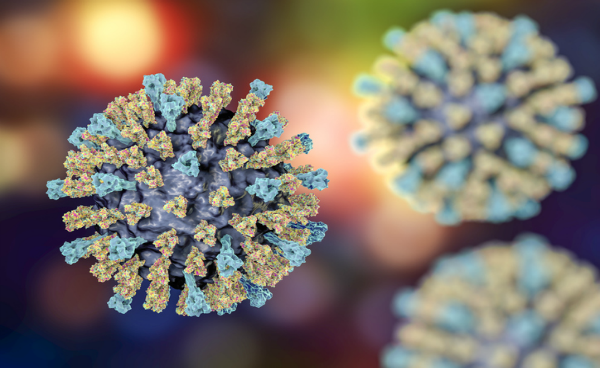 Ten years ago it would not have been worth my time to write about measles nor yours to read about it. In the year 2000, thanks to a very effective 2-shot childhood vaccination program using a combined measles-mumps-rubella (MMR) vaccine, the U.S. was declared free of this potentially lethal disease. However, by the end of April this year, just over 700 cases have been reported by the CDC; the largest number since 1994. This maddening resurgence was and is entirely preventable.
Ten years ago it would not have been worth my time to write about measles nor yours to read about it. In the year 2000, thanks to a very effective 2-shot childhood vaccination program using a combined measles-mumps-rubella (MMR) vaccine, the U.S. was declared free of this potentially lethal disease. However, by the end of April this year, just over 700 cases have been reported by the CDC; the largest number since 1994. This maddening resurgence was and is entirely preventable.
Measles is one of the most easily transmitted of all infectious diseases. Exposing 100 susceptible persons in a room to a coughing child with measles for a few minutes, would be expected to result in 90 cases after an incubation period of 7-21 days. The infection is manifested first by symptoms of fever conjunctivitis and cold-like symptoms dubbed coryza. Shortly after this, a splotchy maculopapular (morbilliform) rash appears that rapidly becomes confluent covering the whole body.
Most patients will recover in about a week, but pneumonia, encephalitis and death may occur.
The Rise and Fall of Measles Vaccinations
The success of the vaccination program in the U.S. was based on a biologic trait shared by the measles virus and several other viruses including smallpox, mumps, poliovirus and varicella virus (chicken pox/zoster). These viruses have no hosts other than humans. Thus, mass human vaccination creates so-called herd immunity, providing a barrier to transmission because of a paucity of susceptible hosts. Therefore, if one can vaccinate a large percentage of the human population (in the case of smallpox, the world) one should be able to eradicate the disease.
The current measles recrudescence was and is totally preventable. Despite the clear and indisputable success of vaccination, an anti-vaxx movement has flourished in this country and elsewhere, predicated on either religious beliefs, or disproven, pseudo-scientific and erroneous statements implicating vaccination as a cause of autism and other diseases. Vaccination refusal has left holes in herd immunity so that importation of measles from countries with less successful or non-existent vaccination programs finds susceptible persons to infect.
Getting Back on Track Against Measles
Even if we are totally successful in restoring herd immunity by enforcing public health imperatives above individual beliefs―a concept that must continue to hold sway―new uncertainties on the duration of immunity have surfaced recently, and may lead to changes in policies and programs. We have long held that natural viral infection and the use of live viral vaccines provide life-long immunity. Recent experience with a number of mumps outbreaks has shown that a majority of cases have occurred in persons with complete mumps immunization histories, indicating that immunity has waned. One theory on how and why this has occurred postulates that the very success of the vaccination program results in the absence of exposure of the vaccinees to people with natural infection, and that without natural boosting of immunity, vaccine-based immunity may wane. Additional adult vaccination may have to be considered.
Despite this potential biologic instability, there is no question that vaccination is the key to preventing this and other viral infections, which carry significant morbidity and mortality. The responsibility is ours. It should be the mission of medical personnel, particularly those who are in a position to teach and influence others, to advocate strongly for universal vaccination. Meanwhile, the CDC has recommended that travelers to endemic areas, receive a repeat vaccination with a single dose of MMR vaccine before traveling to these sites. For those of you who aren’t planning to travel to such areas, but have specific questions about measles, it is recommended that you consult with your physician to discuss your health concerns.

